Don’t crash—pack a flash. Simon Vincett casts some light on the business of being seen on a bike.
No bike rider should be without lights at night or in low light conditions—not poor students, not food delivery riders, not school kids and no-one riding to work. Effective lights are essential (and legally required) to show other road users that you’re there, so you can make your way around with confidence. Do you and the bike riders in your life have the lighting you need? We’re here to help.
The good news is that there’s no need to spend a fortune to have really effective lights. In this, Ride On’s 11th annual test, we’ve scoured the market for the best value lights and put them through our rounds of testing to rank them for visibility, ease of use and durability. We’re proud of the thoroughness of our testing—you can read all about our methods here.
Find below the lights we recommend following this year’s testing or compare the scores yourself of the top 45 currently available lights in the table at the end. We’ve divided the lights in “Be seen” and “To see” categories this year. “Be seen” lights are flashing units aimed at making other traffic see you. “To see” lights are the best current high-output units for those needing to light up their way ahead. For more about the particular needs of those commuting in areas with low or no street lighting, we hear it straight from a rider with precisely that experience.
Firstly though, we’ll run through the basics of effective visibility for bike riders.
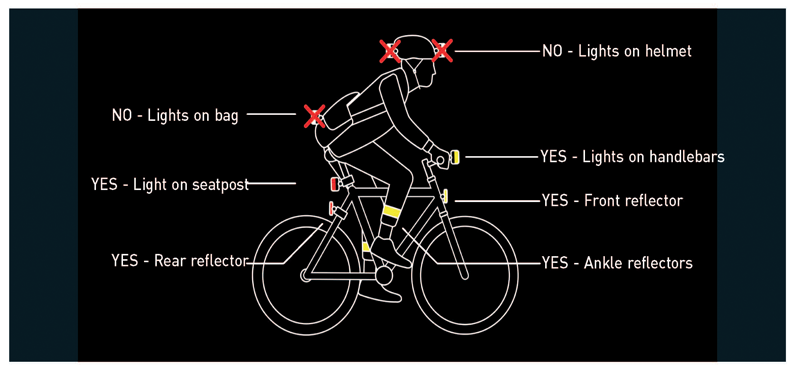
To be seen by other traffic, the road regulations in Australia require you to have a front white and rear red light visible from at least 200 metres. A basic light from a bike shop costing between $20 and $100 will do the trick to meet this requirement. While there are some exceptions, such as the good rear light from Kmart, lights from non-bike shops are likely to perform poorly. Also required is that you display a front white and a rear red reflector on your bike. Some lights incorporate reflectors and thereby satisfy both requirements in one.
Studies have shown that a flashing light is the most visible, which is why we test all lights in flashing modes and recommend that you use a flashing mode when riding. Studies have also established that lights are the most visible to other road users when mounted at handlebar and seat post height. Lights should be fixed to the bike—those attached to clothing and bags frequently end up facing the wrong direction, and offer little benefit. Lights on helmets are less visible to drivers due to being higher up than the usual field of view, and can also be a menace to other bike riders because they are at eye height.
This ‘usual field of view’ of drivers is crucial for bike riders to consider. In the hectic traffic environment—without even considering in-car distractions—drivers frequently have a brief opportunity to scan the situation. If your lights are not in the space that a driver is scanning, looking for other vehicles, you’re putting yourself in danger of not being seen.
For extra visibility, don’t bother with a fluoro vest. Fluorescent colours need ultraviolet radiation from sunlight to glow. It’s reflective elements that are the go-to highlights for nighttime and low-light. Road safety testing has shown that reflective strips around the ankles are the most effective tool you can use to show other road users you are there.
This is for two reasons: firstly they are within the usual field of view of drivers and secondly, they indicate movement that drivers quickly understand as being a bike rider.
We recently investigated how visible bike riders think they are compared to how visible they actually are to other road users with the help of Professor Joanne Wood from the School of Optometry and Vision Science at the Queensland University of Technology. You can read the interesting findings of her studies in our article “How visible are you?”.
Leading lights of 2016
From our accumulated list of current lights from our years of testing we recommend the following lights as the best value for money or as the highest performers. They are divided into the categories of lights to “be seen” or lights “to see” with.
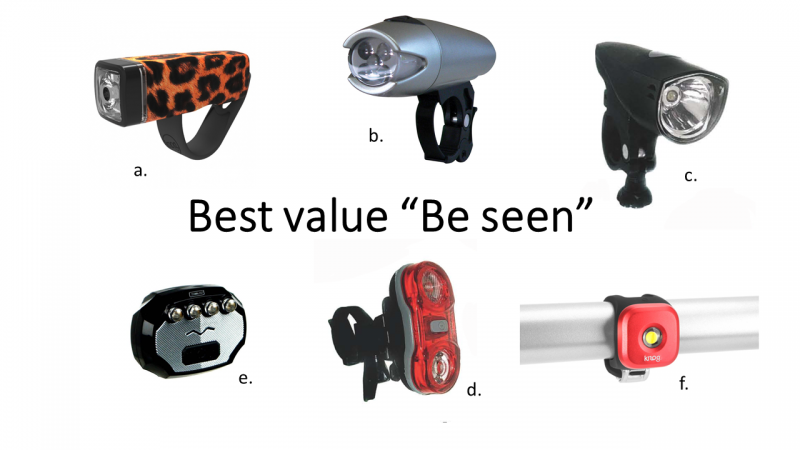 a. Knog Pop 1 $20
a. Knog Pop 1 $20
b.Basta Polaris 5 $21
c.Peddler Bicycle Head Light $30
d.Kmart LED rear $8
e.ES Flare $33
f.Knog Blinder 1 rear $35
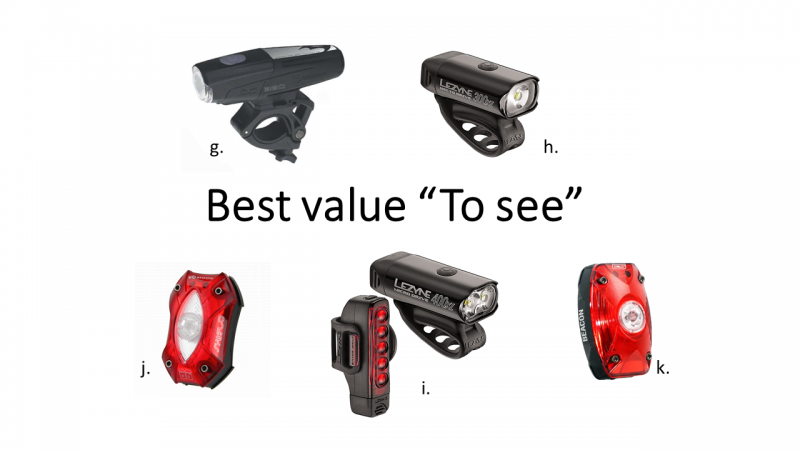
g.Moon LX 360 $105
h.Lezyne Hecto Drive 300 XL $65
i.Lezyne Macro Drive 400 XL set with Lezyne Strip Drive $140
j.Moon Shield $70
k.ES Beacon $60
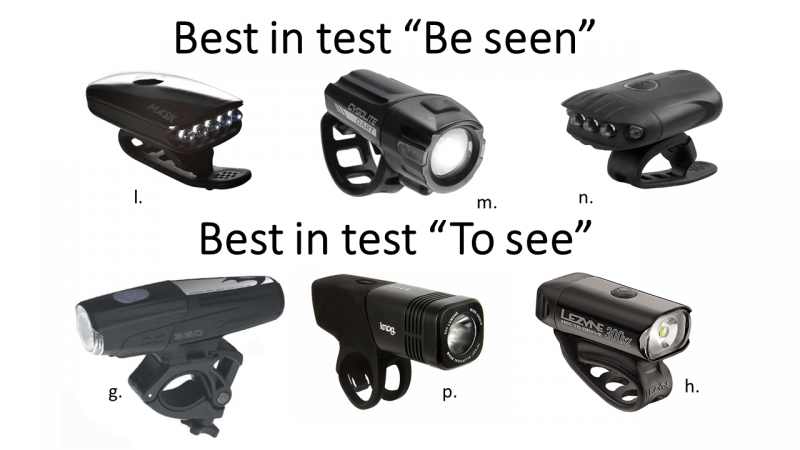
l.Moon Mask 89/100 $65
m.CygoLite Dart 200 89/100 $90
n.Serfas Raider USL-5 89/100 $60
g.Moon LX 360 89/100 $105
p.Knog Blinder Arc 640 88/100 $130
h.Lezyne Hecto Drive 300 XL 87/100 $65
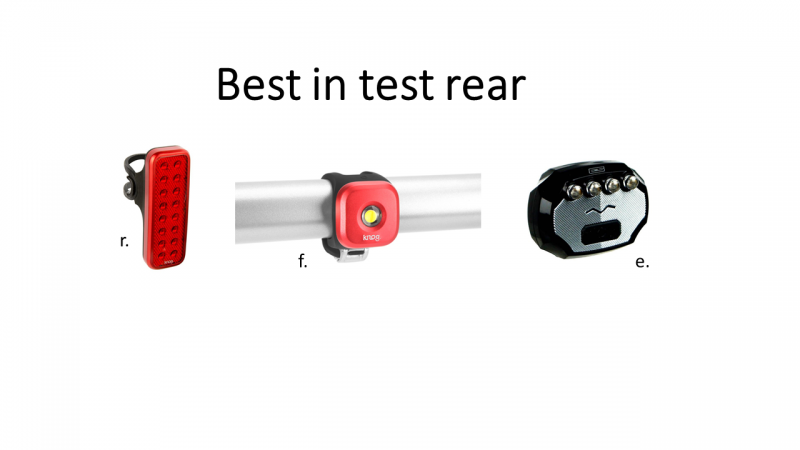
r.Knog Blinder MOB V Kid Grid 93/100 $60
f.Knog Blinder 1 rear 89/100 $35
e.ES Flare 85/100 $33
You can check the Top 45 lights of 2016 and their scores in different aspects of the test in the table at the end of this article.
The power to see
Over the years of the Lights test, many people have written to say that they need a more powerful light for their riding. Ride On’s Iain Treloar, reflects on this same realisation.
“For the four or five years I’ve been commuting daily, the bulk of that time I was living in inner suburbs where street lighting is adequate, there’s usually a fairly well maintained surface and there’s a lot more ambient light. I’ve recently moved further out and have noticed that there’s a lot less street lighting, or more established foliage, or the bike infrastructure’s not as good, or it could be that I’m leaving earlier and returning later—but some combination of all those things means that my needs in lighting have changed.”
Iain has been using Ride On’s recommended Moon Mask compact front light. “I don’t particularly need a really strong light, but I do need a little more output to see where I’m going than a basic ‘flashy’ can provide. What I need is something that can more clearly show what’s going on 20m in front of me so that I can dodge any potholes or obstacles at speed.”
“My learning is that what works within the 5–10km band around the CBD depending on where you go might not always work. There are certainly different needs than simply an urban light and a mountain biking light.”
Trying out more powerful headlights, Iain has tried a 500-lumen Serfas. “The strength of that is impressive—you can really see where you’re going. When I leave my normal commuting route, or head further out past the suburban fringe, that’s what I put on.”
Iain is wary of the inclination some riders have to run really powerful lights. “I think there’s a certain element of ’shock and awe’, to assert their place on the road. I don’t feel that threatened and I’d rather go for a happy medium than have a big bulky high-powered front light myself. If seeing where I was going wasn’t an issue I wouldn’t feel the need to replace the Moon Mask. Maybe 200 lumens would be a sweet spot.”
Get the light right
Objectively speaking, there’s no such thing as “bright” or “not bright”—there’s only contrast against a background. For this reason, you don’t need to have a very bright light in a low light situation, you simply need more light to see your field of vision against the background.
Day lighting is a good case in point. More and more lights designate their most powerful flashing modes as day lighting. With vastly more ambient light available in the day time, for a light needs to be extremely bright to be seen. Day lighting is a useful tool for riders on high-speed roads to be seen as early as possible but it is not appropriate at night, being such an extreme contrast to the low light conditions. The blinding glare produced by day lighting risks disorienting other road users and causing an accident, which is why car headlights are capped to prevent upward spread of their powerful light.
Bicycle Network and Ride On get many letters every winter about blindingly powerful front lights and calls for something to be done to prevent potential accidents. While state government, at least in Victoria, is aware of the issue, no regulation is currently proposed. We suggest that you write to your local state member and your state road authority if you wish to raise awareness of the issue. Please copy Bicycle Network into the correspondence.
Even on non-day-lighting modes you should angle powerful “to see” headlights downwards. This is particularly important on the bike path where other riders pass within metres. The best global guide to this comes from the road regulations of Germany and Japan, which both agree that a bicycle light should illuminate to a distance of 10 metres ahead of a rider and upward output is capped as for car headlights.
A simple solution is to carry a basic front “be seen” light for commuting in built-up areas and a powerful “to see” headlight for the unlit parts of your commute.
Designed to perform
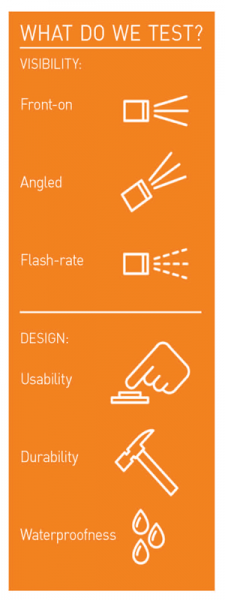 While visibility is obviously the number one attribute of a good light (which is why it comprises 60% of our function score), its usability, durability and waterproofness need to be up to scratch or it’s not worth buying.
While visibility is obviously the number one attribute of a good light (which is why it comprises 60% of our function score), its usability, durability and waterproofness need to be up to scratch or it’s not worth buying.
Iain Treloar, for instance, reels off a lengthy detailed list of attributes of his ideal light: “I like a compact and appealing-looking light. I need the design of it to make sense to me. I need to be able to operate the buttons easily because I have a very low tolerance of things that don’t work well. I need a low-light mode, a high-light mode and a flashing mode, and USB recharging. Ten hours runtime would be good for me so I only have to charge it once a week. Finally it needs to be easy to mount, with an integrated clamp, to swap between bikes.”
The team from RMIT University that performs the design assessment of the lights covers all these aspects and more. Dr Scott Mayson, senior lecturer in Industrial Design, has coordinated the team since 2009. He told Ride On, “The lights have really changed over the time we’ve been doing this test. The introduction of USB and lithium ion batteries, for instance, means that brands can seal the units altogether and you don’t have the issues of them breaking and falling apart.”
The RMIT team perform a battery of drop tests on each light to simulate instances such as a fall from handlebar height during installation and the impact of a crash. While it’s difficult for the average buyer to assess how well made a light is, Dr Mayson suggests there a few things to look at: “Are the lens clear and evenly made? Does the wall thickness look consistent? Do the parts fit together securely? If you can twist it and you can’t hear it creak and groan it’s probably bonded together, whereas if it’s just two pieces of plastic fitted together it might creak and groan.”
Though it comes in for some criticism from some users, Mayson is a fan of silicone. He calls it “a game changer in terms of being able to easily take a light on and off and have a light that is secured right at the handlebars without a bulky clamp.”
In fact he offers the challenge: “Companies with a screw on mount need to think about why they do that. I understand that the lights usually slide off the mount but a lot of people have at least two bikes. Bike lights should be easy to change from one bike to another.”
Iain Treloar concurs, declaring ease of mounting as a key characteristic in the lights he uses: “One of the things I like about those lights is that if I’m parking at the shops, changing between bikes or going to a pub I can take them off quickly and easily. In one day’s riding I might be taking them off two or three times.”
Dr Mayson also notes USB tabs as an improvement. “The lights that integrate a USB tab are convenient in that you don’t need a cable with you. [This] means you can easily charge at home or at work or wherever you are.”
USB tabs also enable better water resistance by avoiding the USB port and the necessary plug.
“One thing that hasn’t improved is the usability of lights over time,” says Dr Mayson. “You shouldn’t need a manual or to have to memorise the sequence. You shouldn’t need a run-through in the shop. Many of the lights in this year’s test remember the mode that you prefer and remain in that mode, but overall many usability aspects are still lagging behind.”
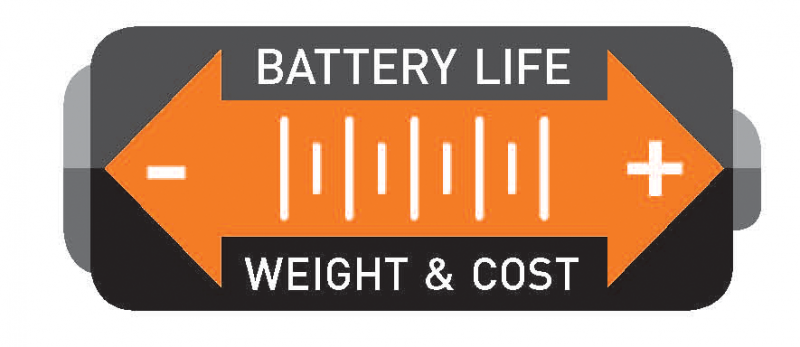 Finally, every light must be judged on its runtime and how that works for you. A larger battery will provide a long runtime—or the period between charges—but with a larger battery comes a greater weight and greater cost. The time duration of your commute to work and home provides a minimum runtime of the lights you should get.
Finally, every light must be judged on its runtime and how that works for you. A larger battery will provide a long runtime—or the period between charges—but with a larger battery comes a greater weight and greater cost. The time duration of your commute to work and home provides a minimum runtime of the lights you should get.
You can expect that a good light will have a low-power indicator, clearly telling you when you need to charge it up again. You might want to have a cable at work and a cable at home to charge at either location. Most lights take a mini or a micro USB input.
By the way, lights that take AA and AAA batteries can also be rechargeable. With a one-off purchase of a battery charger and a set of batteries, you can recharge with much the same convenience of USB rechargeable lights.
Thanks to our 2016 testing crew
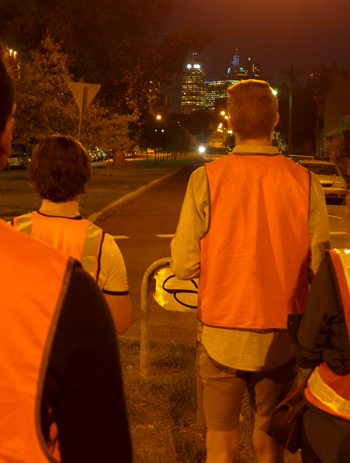 Visibility testing
Visibility testing
Rachel Carlisle, VicRoads
Jenn Thompson, VicRoads
Blake Harris, RACV
Sam Blake, Bicycle Network member
Alicia Webb, Bicycle Network member
Anthony De Leo, Full Beam Australia
Scott Mayson, RMIT
Bradley Erickson, RMIT
Prakash Rajendran, RMIT
Charlie Cranswick, RMIT
James Lyle, RMIT
Adam Norris, RMIT
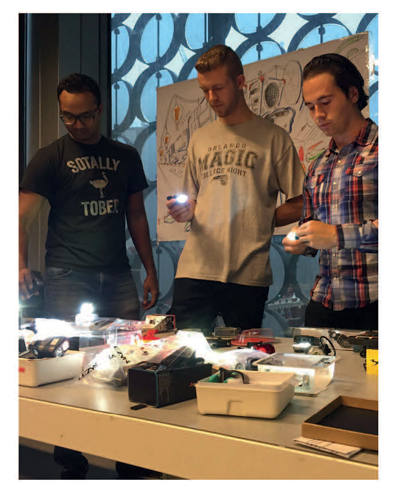 Design testing
Design testing
Scott Mayson
Bradley Erickson
Prakash Rajendran
Charlie Cranswick
James Lyle
Adam Norris
Illustrations and pictures by Karl Hilzinger
Ride On content is editorially independent, but is supported financially by members of Bicycle Network. If you enjoy our articles and want to support the future publication of high-quality content, please consider helping out by becoming a member.
Top 45 Lights 2016
Table key: OR: Overall (/100) RRP: Recommended retail price W: Weight (grams) RT: Runtime (hrs) V: Visibility (/100) F: Function (/40) Q: Quality (/40) P: Price (/10) A: Appearance (/10)
| “Be seen” front lights | ||||||||||
| OR | Light | RRP | W | RT | V | F | Q | P | A | Find retailers |
| 89 | Moon Mask | $65 | 36 | 8.5 | 86 | 35 | 37 | 9 | 8 | www.moonlights.co |
| 89 | CygoLite Dart 200 | $90 | 59 | 24 | 96 | 37 | 36 | 8 | 8 | www.bicorp.com.au |
| 89 | Serfas Raider USL-5 | $60 | 40 | 18 | 80 | 34 | 39 | 9 | 7 | www.velovita.net.au |
| 87 | CygoLite Dart 100 | $70 | 48 | 15 | 84 | 34 | 36 | 9 | 8 | www.bicorp.com.au |
| 85 | Knog Blinder MOB Mr Chips | $60 | 38 | 4 | 71 | 31 | 36 | 9 | 8 | www.knog.com.au |
| 85 | Peddler Bicycle Head Light | $30 | 96 | ? | 89 | 32 | 36 | 9 | 8 | www.bicyclepeddler.com.au |
| 84 | Ilumenox Shield 200 | $75 | 69 | 16 | 58 | 27 | 40 | 8 | 9 | www.diggari.com.au |
| 84 | Knog Pop 2 | $30 | 92 | 110 | 92 | 36 | 30 | 9 | 9 | www.knog.com.au |
| 83 | Moon Ring front | $50 | 40 | 3.5 | 65 | 28 | 38 | 8 | 9 | www.moonlights.co |
| 83 | Knog Pop 1 | $20 | 55 | 100 | 83 | 34 | 30 | 10 | 9 | www.knog.com.au |
| 81 | Basta Polaris 5 | $21 | 116 | ? | 75 | 29 | 36 | 10 | 6 | www.echelonsports.com.au |
| 81 | Moon Mk-2 front | $65 | 28 | 2.5 | 88 | 32 | 32 | 8 | 9 | www.moonlights.co |
| 79 | Owleye Highlux 30 | $53 | 65 | 6 | 59 | 25 | 40 | 8 | 5 | www.bicyclepeddler.com.au |
| OR | Light | RRP | W | RT | V | F | Q | P | A | Find retailers |
Table key: OR: Overall (/100) RRP: Recommended retail price W: Weight (grams) RT: Runtime (hrs) V: Visibility (/100) F: Function (/40) Q: Quality (/40) P: Price (/10) A: Appearance (/10) *set with Strip Drive
| “To see” front lights | ||||||||||
| OR | Light | RRP | W | RT | V | F | Q | P | A | Find retailers |
| 89 | Moon LX 360 | $105 | 151 | 10.5 | 93 | 32 | 40 | 9 | 8 | www.moonlights.co |
| 88 | Knog Blinder Arc 640 | $130 | 152 | 15 | 81 | 35 | 36 | 8 | 9 | www.knog.com.au |
| 87 | Lezyne Hecto Drive 300 XL | $65 | 82 | 10 | 70 | 30 | 40 | 8 | 9 | www.monzaimports.com.au |
| 87 | Lezyne Macro Drive 400 XL | $140* | 93 | 11 | 72 | 30 | 40 | 8 | 9 | www.monzaimports.com.au |
| 86 | Guee Sol 300 Plus | $80 | 84 | 15 | 66 | 29 | 40 | 9 | 8 | www.guee-intl.com |
| 85 | Moon X-Power 500 | $150 | 174 | 5.5 | 81 | 35 | 36 | 7 | 7 | www.moonlights.co |
| 85 | Lezyne Macro Drive 600 XL | $125 | 155 | 13.5 | 68 | 28 | 40 | 8 | 9 | www.monzaimports.com.au |
| 85 | Cateye Nano Shot+ | $150 | 179 | 4 | 73 | 32 | 40 | 7 | 6 | Sheppard 1300 833 305 |
| 84 | Giant Numen Plus HL1 | $68 | 104 | 25 | 63 | 28 | 40 | 9 | 7 | www.giant-bicycles.com/en-au |
| 83 | Light and Motion Urban 400 | $170 | 111 | 6 | 63 | 30 | 40 | 7 | 7 | www.jetblackproducts.com |
| 83 | Light and Motion Urban 550 | $200 | 113 | 6 | 67 | 30 | 40 | 6 | 7 | www.jetblackproducts.com |
| 83 | Lezyne Power Drive | $100 | 158 | 5.5 | 71 | 27 | 40 | 8 | 8.5 | www.monzaimports.com.au |
| 82 | Moon X-power 600 | $160 | 220 | 6.5 | 75 | 29 | 40 | 7 | 6 | www.moonlights.co |
| 82 | Cygo-Lite Streak | $90 | 120 | 8 | 51 | 25 | 40 | 9 | 8 | www.bicorp.com.au |
| 82 | Moon X-power 780 | $173 | 223 | 5 | 72 | 29 | 40 | 7 | 6 | www.moonlights.co |
| 81 | Knog Blinder Road 400 | $110 | 102 | 9 | 66 | 27 | 38 | 8 | 9 | www.knog.com.au |
| 81 | Fyxo ‘King Bright | $79 | 353 | 15 | 70 | 26 | 40 | 9 | 6 | shop.fyxo.co |
| 81 | Serfas True 505 | $140 | 141 | 11 | 73 | 27 | 40 | 7 | 7 | www.velovita.net.au |
| OR | Light | RRP | W | RT | V | F | Q | P | A | Find retailers |
Table key: OR: Overall (/100) RRP: Recommended retail price W: Weight (grams) RT: Runtime (hrs) V: Visibility (/100) F: Function (/40) Q: Quality (/40) P: Price (/10) A: Appearance (/10) *set with Strip Drive
| Rear lights | ||||||||||
| OR | Light | RRP | W | RT | V | F | Q | P | A | Find retailers |
| 93 | Knog Blinder MOB V Kid Grid | $60 | 43 | 6 | 73 | 34 | 40 | 9 | 10 | www.knog.com.au |
| 89 | Knog Blinder 1 rear | $35 | 16 | 11 | 69 | 31 | 40 | 9 | 9 | www.knog.com.au |
| 85 | ES Beacon | $60 | 53 | 7 | 81 | 33 | 37 | 7 | 8 | www.echelonsports.com.au |
| 85 | Moon Nebula | $86 | 63 | 4.5 | 66 | 28 | 40 | 8 | 9 | www.moonlights.co |
| 84 | Moon Shield | $70 | 57 | 7 | 83 | 33 | 36 | 7 | 8 | www.moonlights.co |
| 84 | Moon Ring rear | $46 | 40 | 3 | 71 | 29 | 38 | 8 | 9 | www.moonlights.co |
| 84 | Lezyne Strip Drive | $90 | 64 | 3 | 51 | 28 | 40 | 8 | 8 | www.monzaimports.com.au |
| 83 | Moon Comet rear | $60 | 47 | 5.5 | 58 | 27 | 40 | 9 | 7 | www.moonlights.co |
| 83 | CygoLite Hotshot Micro | $70 | 43 | 18 | 58 | 28 | 40 | 9 | 7 | www.bicorp.com.au |
| 83 | Serfas Guardian | $100 | 59 | 4.5 | 80 | 30 | 38 | 7 | 8 | www.velovita.net.au |
| 83 | Serfas Raider rear USL-5R | $60 | 38 | 18 | 69 | 31 | 36 | 8 | 8 | www.velovita.net.au |
| 83 | CygoLite Hotshot 50 | $70 | 64 | 75 | 73 | 26 | 40 | 9 | 8 | www.bicorp.com.au |
| 83 | Fibre Flare Long Red | $40 | 84 | 75 | 60 | 27 | 38 | 8 | 9 | www.fibreflare.com |
| 82 | ES Flare | $33 | 34 | 7 | 81 | 29 | 36 | 8 | 9 | www.echelonsports.com.au |
| 82 | Cateye Rapid X2 rear | $80 | 33 | 30 | 45 | 26 | 38 | 8 | 9 | Sheppard 1300 833 305 |
| OR | Light | RRP | W | RT | V | F | Q | P | A | Find retailers |
Table key: OR: Overall (/100) RRP: Recommended retail price W: Weight (grams) RT: Runtime (hrs) V: Visibility (/100) F: Function (/40) Q: Quality (/40) P: Price (/10) A: Appearance (/10)


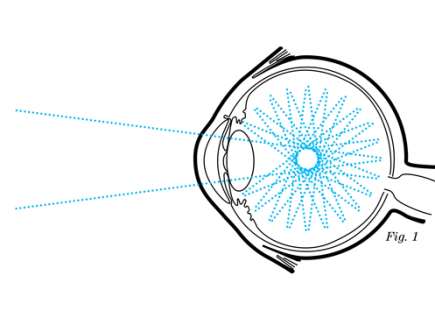
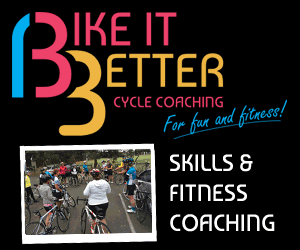
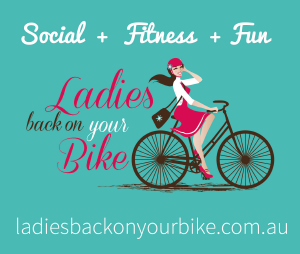
This article appears to be aimed at the enthusiast. Where is the advice suited to getting “more people cycling more often”, such as daily transport, commuting and utility riders? Where are the dynohubs and lights, such as the Busch & Muller Lumotec? These lights are always available, never get lost or stolen, and provide 80 lux.
Did you conduct a hazard identification and risk assessment of high powered strobe lights, and their impact on the safety and amenity of other path users?
Bicycle Network should do more to promote consideration on our shared paths, such as by recommending constant lights instead of strobes, and lights directed down at the path, instead of up into the eyes of other riders.
Thanks for the article.
No Choice involvement this year?
Less lights too, I know there are too many to test; were others knocked out early or how do you choose which to test?
I’m always surprised there are so few battery lights – I love how I can put in some AA or AAA’s and they last a whole season, but expensive Li-rechargeables only last 10’s of hours if that. What gives?!
I was thinking the same things.
What about AA batteries?
Put them in once and remember to change them very infrequently?
I’ve been using rechargeable LSD (Low Self Discharge) AA’s and they last years between charges.
How come everyone else is willing to put up with lights you have to charge every day?
How about a quick clip on system? All you need is something that is held onto the headstem with a rubber band. I don’t need something with a zillion watts. Cheap and functional would suffice?
Enough so car drivers can easily see that a rider is on the road? A few small LED’s is usually sufficient to do that? If it’s only a few dollars you won’t worry if someone decides to nick it?
🙂
If nothing else, this gives us something to work from when it comes to weaving through the many options available. And I like that you include sensibly priced lights.
Thank you. I also must agree with the other post-ers, a battery light is always a good option for when the pricey Li-ion light charge fails halfway home, ‘cos you didn’t remember to charge it (twice in the last month – I think it’s failing).
Also, and I am starting to get hot under the lycra collar on this – correctly aimed non-strobing lights ON LOW BEAM is all that should be used on shared or single track bike paths. Oncoming into these riders with lighthouse lanterns on their handle bars is dangerous and selfish. AIm so it is 10 to 15 metres from the fro wheel, and there’ll be plenty of illumination for bike/foot path speed riding. PLease? One day I will get seriously peeved. It only diminishes any goodwill that riders may have, by blinding the oncoming walker/jogger/rider.
If it hapepes again – look forward to a letter to the Ed!!
Cheers.
I’d like to get a decent helmet-mounted light for extra visibility and lighting. I note that this article ignores the main advantages of helmet-mounted lights – that car drivers cannot actually see your mounted lights from several ranks back due to being blocked by vehicles between. What they see is a big empty space ahead just begging for them to zoom into.
A good head mounted light can also be used judiciously in case of a possible collision (merging into you usually) to briefly flash the driver and let them know that yes, you actually exist and you would like to not die under their wheels, thanks.
That said, the amount of ‘pro’ riders who use Über-bright lights mostly head-mounted lighting up the entire horizon is quite scary. I nearly had a collision recently when the second ‘peloton’ rider was riding on the centreline of the bike path. I couldn’t see him as I was totally blinded by the glare of 10000 suns and riding one handed with the other hand over my eyes.
No thanks also to the lycra ‘peloton’ guy who told me rudely to “get a f***** light” one night. My Knog Blinder was courteously pointed right down to avoid flashing them, too bad they didn’t bother to do the same or open their eyes. How hard can it be to see a 6′ guy in yellow lit up by 10000 suns 10m away?
Thanks for the lights test – it needs to be about 3 months earlier in the year so people can buy lights before winter sets in.
I take issue with the line “Studies have also established that lights are the most visible to other road users when mounted at handlebar and seat post height.” Does this mean that car drivers only have a very narrow field of vision? And with the prevalence of large 4WDs, a lot of drivers are sitting almost at cyclists head height. I have a helmet mounted rear light which I think makes me more visible.
Thanks for the article and recommendations. Well done.
However I am genuinely surprised that no-one has even mentioned what for me were really major negatives with quick release silicone straps for front lights. Because the fixing is by design flexible, the light beam jiggles up and down constantly while riding. For me it was so incredibly distracting that I no longer use front lights that cannot have an absolutely FIRM attachment to the handlebar. Though my sample number is small (3), I find it hard to believe that this is not a serious problem with ALL silicone, strap-mounted front lights.
The testing makes no mention of beam jiggle when the front wheel is dropped say, even as little as, 100mm. Nor is the fact that beam alignment typically changes with strap fixed lights after going over big bumps.
And these beam problems are all worse with properly inflated front tyres, bumpy roads and poorly maintained bike trails. And if the handlebar is wet when putting your silicone strap light on, the beam sags even quicker.
Again, I am really surprised that these practical and everyday issues are not mentioned or considered in the testing procedure for front lights.
Do a drop test before buying.
I’m amazed at the great range of lights available to riders these days. When I started serious commuting back in the mid 1970’s there were no decent lights available, period. But what I did learn back then was the value of good reflectors and plenty of them. I believe this still holds true and all my bikes are ‘covered’ in reflective tape as well as wearing a reflective vest and anklets. Sure I love my lights, including the little flashing LED jobs on my helmet but I wouldn’t dare be without reflectors.